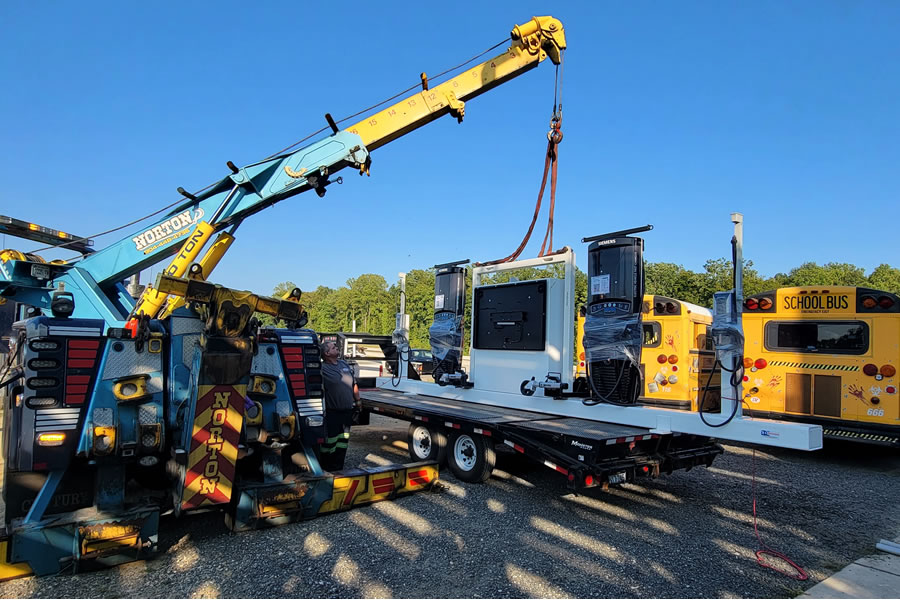by Alan Hall
Share
Share

DC Chargers Explained
As electric vehicles (EVs) become more popular, the need for charging infrastructure is increasing. DC chargers provide a way for EV drivers to quickly charge their vehicles, reducing the need for long charging sessions. DC chargers or DC Fast Chargers use direct current (DC) power to quickly charge EV batteries. Compared to Level 1 and Level 2 alternating current (AC) chargers, which typically take several hours to fully charge an EV, DC chargers can charge an EV in as little as 30 minutes.
Different types of DC Chargers
There are several types of DC chargers available, each with different power levels and connector types. The most common types of DC chargers include:
- CHAdeMO: This type of charger is used primarily by Japanese automakers such as Nissan and Mitsubishi. It can provide up to 62.5 kW of power.
- CCS (Combined Charging System): This type of charger is used by many European and American automakers, such as Volkswagen, BMW, and General Motors. It can provide up to 350 kW of power.
- Tesla Supercharger: This charger is proprietary to Tesla and can only be used to charge Tesla vehicles. It can provide up to 250 kW of power. Understanding Voltage & Amperage ratings when selecting a DC Charger
When selecting a DC charger, it’s important to consider the voltage and amperage ratings. The voltage rating is the amount of electrical pressure that the charger can provide. The amperage rating is the amount of electrical current that the charger can provide.
The voltage and amperage ratings of a DC charger will determine how quickly it can charge an EV. Higher voltage and amperage ratings will result in faster charging times. However, it’s important to note that the EV’s battery must also be able to handle the charging speed. Charging an EV too quickly can damage the battery and reduce its lifespan.
Considerations when buying a DC Charger
When buying a DC charger, there are several considerations to keep in mind. First, it’s important to consider the power output of the charger. Higher power output will result in faster charging times, but it may also be more expensive.
Second, it’s important to consider the connector type. Different automakers use different connector types, so it’s important to choose a charger that is compatible with your EV. Many DC fast chargers have multiple connector types, so they can be used with a variety of EVs.
Third, it’s important to consider the location of the charger. DC fast chargers require a large amount of electrical power, so they must be installed by a licensed electrician. It’s also important to consider the physical location of the charger, as it should be easily accessible to EV drivers.
Finally, it’s important to consider the cost of the charger. DC fast chargers can be more expensive than Level 2 chargers, so it’s important to compare prices and consider the long-term benefits of the charger, take advantage of existing tax and financial incentives, and use the correct type of charger for the correct application.
Best Practices for Using & Maintaining a DC Charger
To ensure that a DC charger continues to function properly, it’s important to follow best practices for using and maintaining the charger. Some best practices include:
- Following manufacturer instructions: It’s important to follow the manufacturer’s instructions for using and maintaining the charger.
- Regular cleaning: Regularly cleaning the charger can help prevent dirt and debris from building up and affecting its performance.
- Regular inspections: Regularly inspecting the charger can help identify any potential issues before they become major problems.
- Upgrading firmware: Some chargers may have firmware updates that improve their performance or fix bugs. It’s important to regularly check for firmware updates and install them as needed.
DC-America manufactures a modular charging platform with a single-point connection that provides a convenient and efficient way for EV owners and drivers to charge their vehicles with DC Chargers or Level 2 chargers. Contact Us to learn more.
As electric vehicles (EVs) continue to gain popularity, the demand for EV charging stations is on the rise. In order to effectively deploy an EV charging station, there are several important site considerations that need to be taken into account. These considerations include factors such as location, power supply, accessibility, and cost. Let’s take a […]


